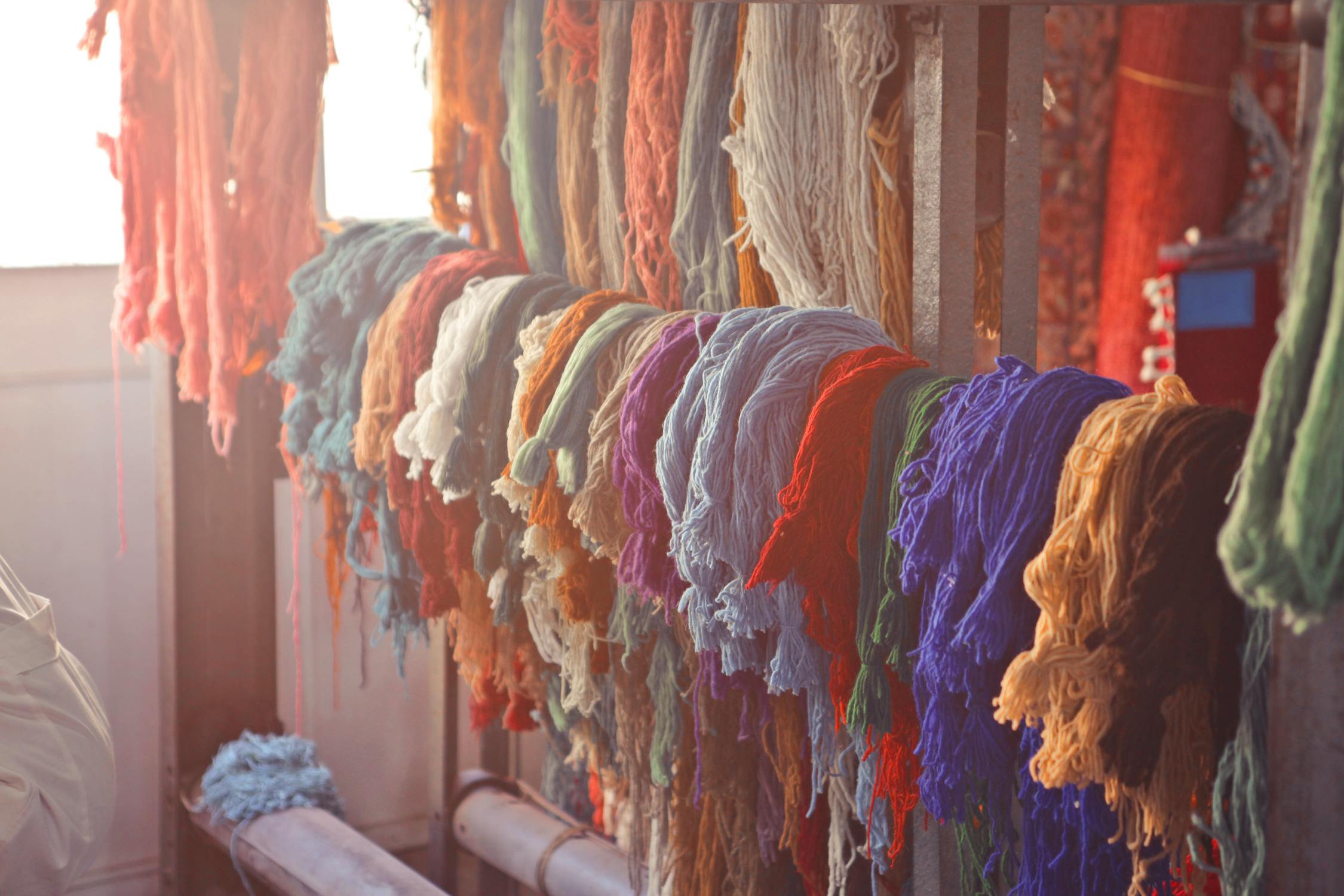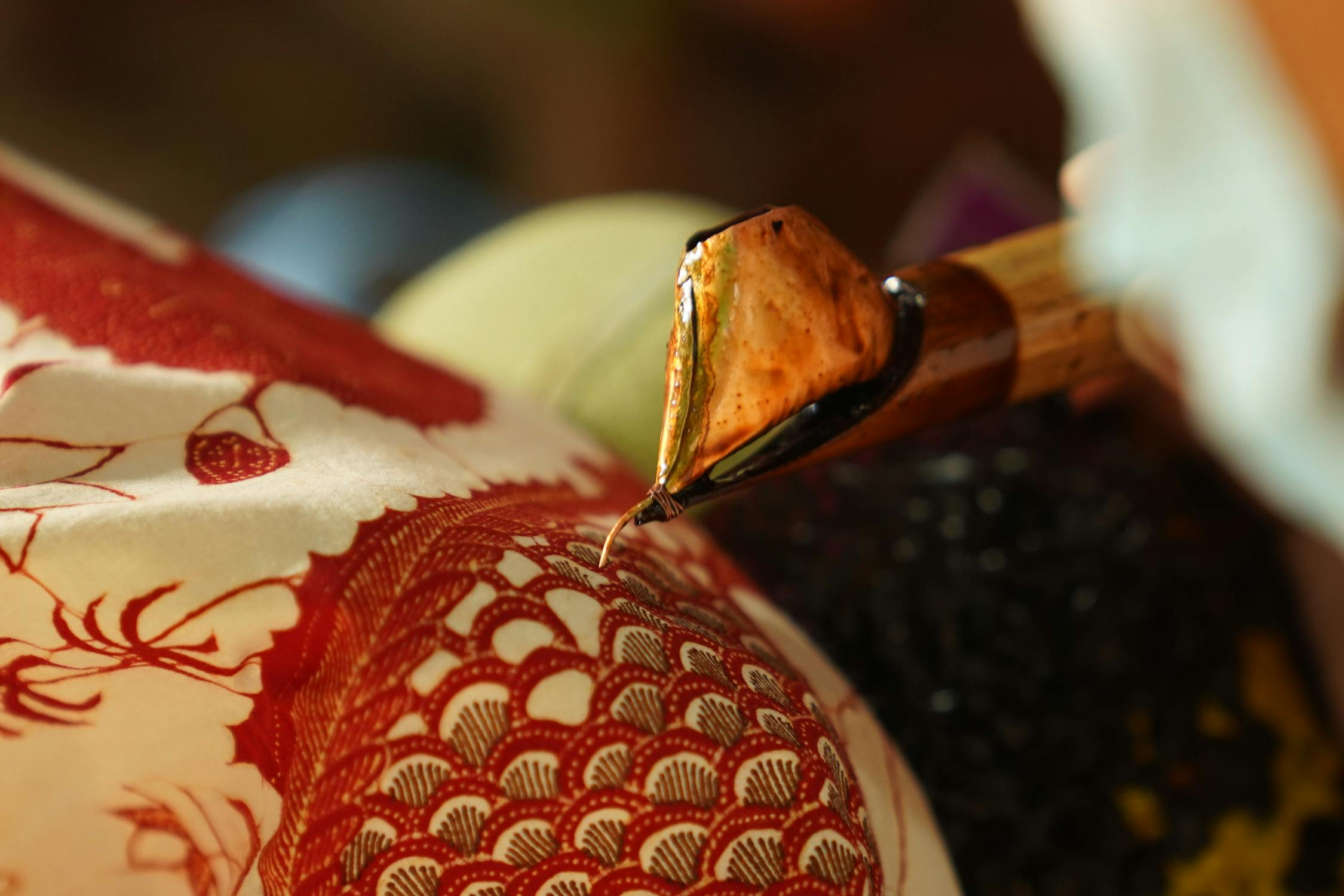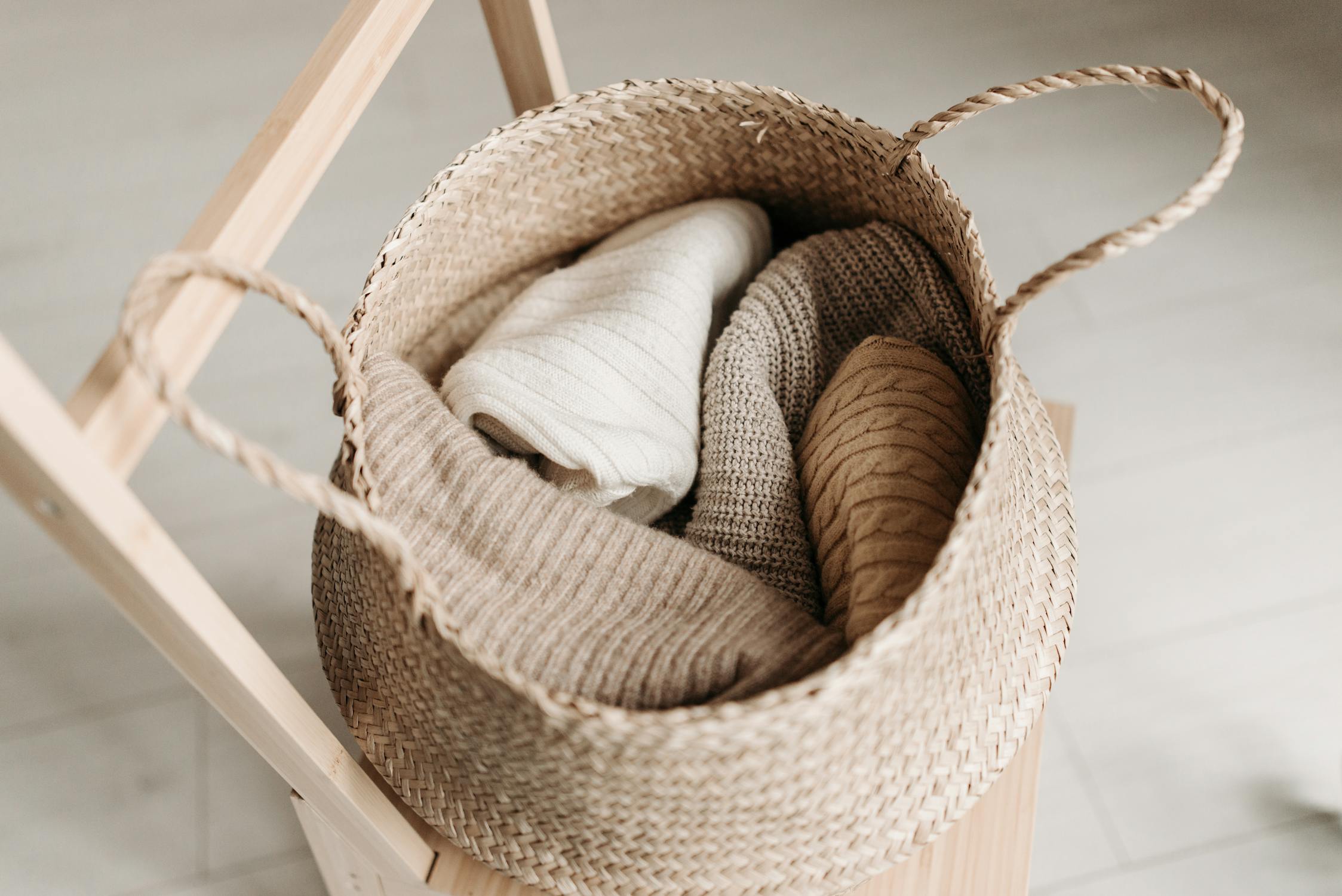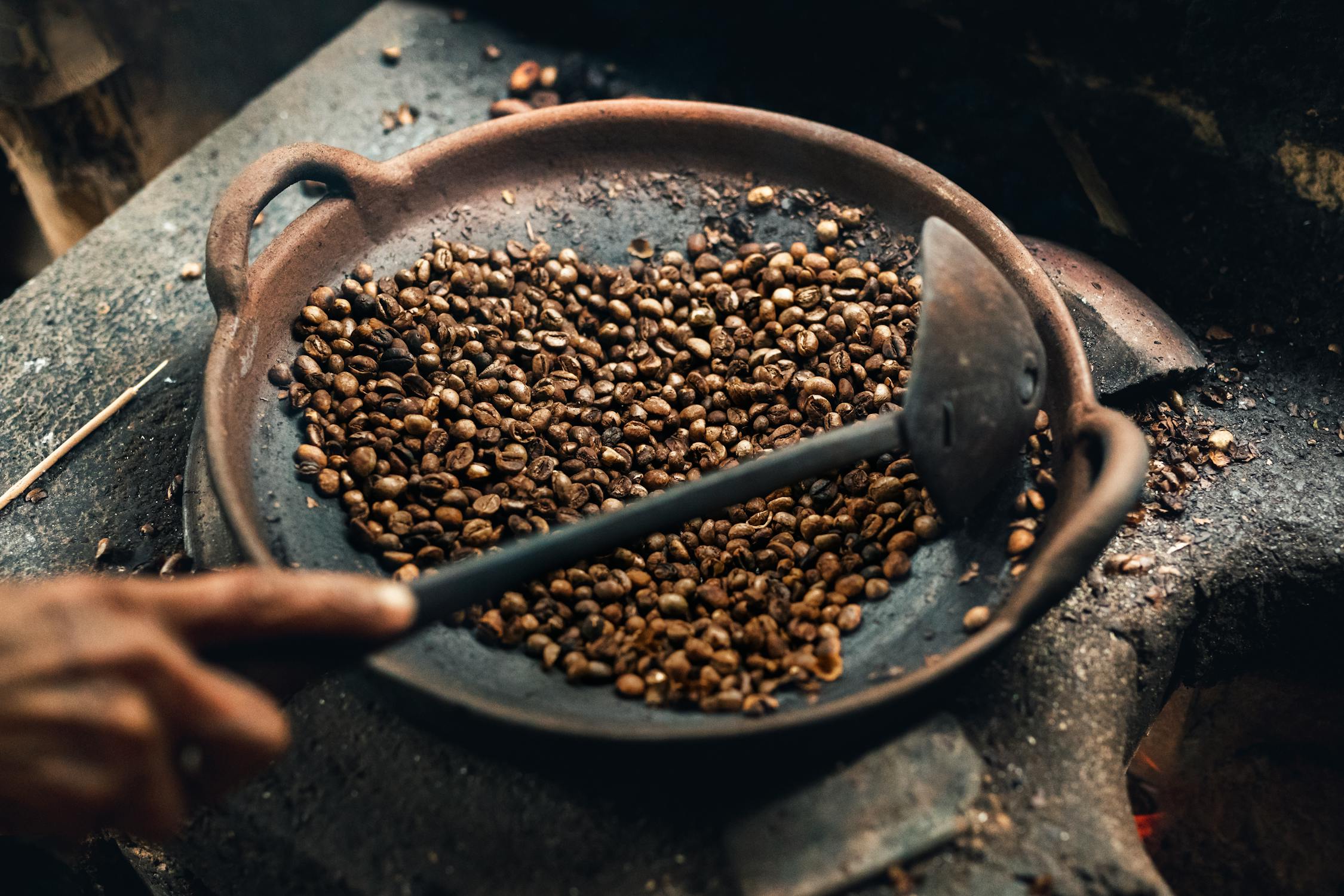7 Unique Bali Souvenirs for You to Bring Home!

Illustration of Bali Souvenirs, photo by Andrea Piacquadio on Pexels
Bali, known as the Island of the Gods, is a treasure trove of cultural heritage, natural beauty, and artisanal craftsmanship. Every year, millions of tourists flock to this enchanting island, seeking relaxation and a deeper connection with its rich traditions.
Souvenirs play a pivotal role in this experience, serving as tangible memories of the journey and as a means to share Bali's unique culture with loved ones. Here are seven unique souvenirs that you should consider bringing home from your Bali adventure.
Balinese Batik Fabric

Batik, photo by John Bastian on Pexels
Bali's batik fabric is a masterpiece of art, known for its intricate patterns and vibrant colors. Each piece tells a story, often depicting nature, folklore, or religious symbols. Whether you use it as a sarong, a tablecloth, or a wall hanging, Balinese batik fabric is a versatile and beautiful reminder of your time on the island.
- Endek Batik: Endek is a traditional Balinese woven fabric characterized by its ikat patterns, where the threads are tie-dyed before weaving. The motifs are usually bold and vibrant, often featuring symmetrical designs inspired by nature.
- Gringsing Batik: Gringsing is a rare and ancient form of double ikat weaving found in the village of Tenganan in Bali. The complex process and the intricate patterns, which are believed to have magical properties, make Gringsing fabrics highly valued and sought after.
- Prada Batik: Prada batik is known for its luxurious appearance, as it is adorned with gold or silver leaf over the batik patterns. This type of batik is often used for ceremonial attire and is a symbol of prestige and elegance.
- Songket Batik: Songket is a type of brocade fabric interwoven with gold or silver threads. These metallic threads add a shimmering effect to the fabric, making it a popular choice for traditional Balinese clothing and ceremonial wear.
Unique Balinese Wooden Masks

Wooden Masks, photo by Helee on Pixabay
Bali is not only a destination for its beaches and temples but also a center for vibrant cultural artifacts, among which traditional wooden masks hold a special place. These masks are not mere decorations but are steeped in cultural and spiritual significance, playing a crucial role in Balinese rituals and performances, such as the famous Barong and Topeng dances.
Types and Designs
Each mask is hand-carved and intricately painted, embodying various characters from Balinese Hindu mythology and local folklore. The types of masks include:
- Barong Masks: Representing the mythical lion-like creature Barong, these masks are used in dances depicting the battle between good and evil.
- Rangda Masks: Dramatically fearsome, these represent Rangda, the demon queen and the embodiment of evil, often characterized by bulging eyes and terrifying teeth.
- Topeng Masks: Used in a dance that narrates stories of famous Balinese kings and heroes, Topeng masks portray human faces and express a range of emotions from laughter to sadness.
High Craftsmanship
The creation of each mask is a spiritual endeavor as much as it is an artistic one. Craftsmen, known locally as 'undagi', work with sacred woods such as pule and waru, believed to have spiritual significance. The process is meticulous, often requiring weeks or even months to complete a single mask. The wood is carefully selected, dried, carved, and then smoothed before painting and decoration commen.
Silver Jewelry

Jewelry, photo by cottonbro studio on Pexels
Bali's reputation for exquisite craftsmanship extends to its silver jewelry, which is renowned worldwide for its intricate designs and fine quality. The island's skilled artisans, particularly in areas like Celuk Village, have been passing down their knowledge of silver-smithing from generation to generation, turning Bali into a hub for those seeking unique and beautifully crafted jewelry.
Silver jewelry in Bali is more than just accessory. It is deeply integrated into local customs and ceremonies. Many Balinese wear specific pieces as part of ritual attire, believing the silver symbolizes purity and spiritual energy.
Styles and Techniques
The traditional Balinese technique involves using tiny silver balls placed meticulously to create complex patterns known as 'granulation'. This technique, combined with 'filigree', where threads of silver are twisted and turned into delicate designs, results in jewelry that is not only ornamental but also full of cultural significance. These pieces often feature motifs inspired by nature and Balinese Hinduism, such as flowers, frangipani, the lotus, and mythical beings.
Interactive Experiences in Making Silver Jewelries
For those interested in not just purchasing but also understanding and creating silver jewelry, Bali offers numerous workshops. These experiences are particularly concentrated in Celuk Village, known as the 'Silver Village' of Bali:
- Studio Perak in Ubud: Run by local artisans, this studio not only sells high-quality jewelry but also offers half-day workshops where participants can learn basic silversmithing techniques and create their own piece of jewelry to take home.
- Chez Monique Silver Smith: This family-run business offers a hands-on experience in jewelry making. It's a fantastic opportunity to immerse oneself in the art of Balinese silver making and understand the cultural narratives woven into each piece.
- WS Art Studio: Located slightly off the beaten path in Celuk, WS Art Studio provides a more intimate setting where visitors can spend a day with a master silversmith, learning about the design and creation process.
Where to Shop Silver Jewelries in Bali?
Apart from Celuk, the Ubud Market and Seminyak area are also known for their array of silver shops offering everything from wholesale bargains to high-end boutique pieces. Whether looking for a small charm or an elaborate necklace, Bali's silver markets cater to all tastes and budgets.
Traditional Balinese Paintings

Traditional Paintings, photo by Craig Adderly on Pexels
Traditional Balinese paintings are more than just art; they are a vibrant expression of the island’s cultural and spiritual life. Historically rooted in the depiction of myths and legends, these paintings have evolved but continue to hold a special place in the hearts of both locals and art lovers worldwide.
The art of painting in Bali underwent significant transformation in the early 20th century, influenced by Western artists who settled on the island. This blend of local and Western techniques gave rise to a unique style known as the ‘Young Artist’ style, characterized by its vibrant colors, elongated figures, and dynamic scenes. This style is distinct from the more traditional 'Kamasan' or 'Wayang' style, which is deeply entwined with Balinese Hinduism, depicting scenes from religious texts and local folklore in a more classical and formal manner.
Where to Find Traditional Balinese Paintings?
Ubud is often considered the cultural heart of Bali and is home to numerous galleries where traditional paintings can be purchased. Notable places include:
- Neka Art Museum: This museum offers a comprehensive collection of Balinese paintings, providing insights into the evolution of painting styles on the island.
- Agung Rai Museum of Art (ARMA): Visitors can not only view classic and contemporary works but also participate in art workshops.
- Puri Lukisan Museum: The oldest art museum in Bali that showcases traditional Balinese paintings and wood carvings.
For you that wanting an immersive experience, many art studios and galleries in Ubud and around Bali offer painting classes taught by local artists. These classes allow visitors to understand the techniques first-hand and create their own Balinese art under the guidance of experienced painters.
Traditional Balinese Clothing

Traditional Clothing, photo by Reynaldo Yodia on Pexels
Traditional Balinese clothing is a vibrant expression of the island’s rich cultural heritage, deeply intertwined with religious rituals and community celebrations. These garments are not only worn for their aesthetic appeal but also for their cultural significance, each piece symbolizing a part of Bali's tradition.
Styles and Balinese Key Garments
Here are some of the Balinese traditional clothing varies by gender, occasion, and sometimes status:
- Kebaya: For women, the kebaya is a quintessential garment. It is a form-fitting blouse, delicately embroidered and made from fine fabric, often worn with a colorful sash and a batik sarong. Modern interpretations of the kebaya blend traditional designs with contemporary fashion, making it popular in both ceremonial and casual contexts.
- Sarong: Both men and women wear sarongs, a wrapped garment made from a long piece of cloth tied around the waist. Men’s sarongs are usually plainer compared to women’s, which are brightly colored and often feature intricate batik or ikat patterns.
- Udeng or Destar: Men often wear an udeng, which is a headband or hat made of folded cloth. It serves both functional and spiritual purposes, symbolizing the mind's control over the baser instincts.
- Selendang: A selendang is a sash or scarf used by women to complement the kebaya, often adding a touch of elegance and completing the outfit.
Unique Handwoven Baskets

Handwoven Baskets, photo by Pavel Danilyuk on Pexels
Bali is home to skilled artisans who create beautiful handwoven baskets, perfect for adding a touch of Bali to your home decor.
Bali's artisanal heritage is vividly displayed in the craft of basket weaving, an age-old practice that combines utility with artistic expression. Handwoven baskets are not only practical items used daily by the Balinese but are also integral to various cultural and religious rituals.
These baskets are woven using a variety of natural materials, including bamboo, rattan, pandan, and atap (palm leaves). Each material lends a unique texture and durability to the baskets. Artisans employ different weaving techniques to create a range of patterns and designs, some of which are specific to certain villages or communities.
- Bamboo Baskets: Known for their strength and flexibility, these are commonly used for carrying goods and as containers for offerings in religious ceremonies.
- Rattan Baskets: Softer and more pliable than bamboo, rattan allows for more intricate designs and is often used for decorative purposes or in the creation of household storage baskets.
- Pandan Baskets: Characterized by their fine texture and natural green hue, pandan baskets are typically smaller and used for both decoration and practical uses such as food serving.
Where to Shop for Handwoven Baskets
For visitors interested in purchasing these unique handwoven baskets, Bali offers several markets and villages renowned for their basketry:
- Ubud Market: Located in the cultural center of Ubud, this market features a variety of handcrafted baskets, showcasing the diversity of weaving styles from across the island.
- Tenganan Village: Famous for its Ata grass baskets, this traditional village offers a glimpse into the ancient techniques passed down through generations. The baskets here are known for their fine weave and durability.
- Sukawati Art Market: A favorite among locals and tourists alike, this market offers a wide range of baskets at competitive prices, making it a good spot for those looking to buy in bulk.
Tasty Luwak Coffee

Luwak Coffee, photo by Aleksandar Pasaric on Pexels
Luwak coffee, also known as civet coffee, stands out as one of the most intriguing and controversial specialties in the coffee world. Originating from Indonesia, this coffee is renowned not just for its flavor, but also for its unique production process.
Luwak Coffee Production Process
Luwak coffee is made from coffee beans that have been digested and excreted by the Asian palm civet. The civets are believed to select the best and ripest coffee cherries. Enzymes in their digestive system break down the bean proteins, which reduces bitterness and imparts a distinctive smoothness to the coffee. After collection, the beans are thoroughly washed, sun-dried, lightly roasted, and then ground into coffee.
The resulting brew is noted for its exceptional smoothness and rich flavor, with less bitterness than more traditional coffees. It often carries hints of chocolate and a complex aromatic profile that can include notes of caramel, nut, and spice. The body is usually full, making it a luxurious and memorable coffee experience.
Where to Find the Tastiest Luwak Coffee in Bali?
For those interested in trying authentic Luwak coffee in Bali, it is essential to choose reputable sources:
- Ubud and surrounding areas: Many coffee plantations around Ubud offer tours that explain the production process and offer tastings of Luwak coffee. These tours provide insight into the ethical harvesting practices.
- Bali Pulina Agro Tourism: Located near Ubud, this plantation is a popular destination where visitors can see civets and learn about the coffee’s production first-hand, ensuring that the civets are not caged or mistreated.
- Teba Sari Bali Agrotourism: Another ethical plantation that offers a taste of Luwak coffee along with a tour of their coffee gardens and a detailed explanation of the process from bean to cup.
Bali's rich cultural heritage offers an array of unique souvenirs, from intricately carved wooden masks and exquisite silver jewelry to vibrant traditional paintings and handwoven baskets. Each piece not only serves as a beautiful reminder of your visit but also supports local artisans and preserves the island's traditions. Whether exploring bustling markets or participating in workshops, these souvenirs allow you to bring a piece of Bali's enchanting spirit back home.
